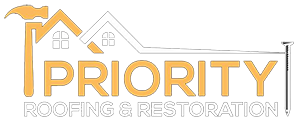Understanding your Homeowners Insurance Policy
Understanding your homeowners insurance policy is as crucial as safeguarding your home itself because it’s the safety net that protects your most significant investment. However, understanding the details of these policies can be challenging so we have created a comprehensive guide to help you navigate and understand your homeowners insurance policy better.
1. Know Your Coverage Types:
Homeowners insurance typically comprises various coverage types:
– Dwelling Coverage: Protects the structure of your home from covered perils, such as fire, windstorm, or vandalism.
– Personal Property Coverage: Covers your belongings, like furniture, clothing, and electronics, in case of damage or theft.
– Liability Coverage: Shields you from legal responsibility if someone is injured on your property and decides to sue.
– Additional Living Expenses (ALE): Covers costs for temporary relocation if your home becomes uninhabitable due to covered damage.
2. Understanding Policy Limits and Deductibles:
Policy limits dictate the maximum amount your insurer will pay for covered losses. Meanwhile, the deductible is the amount you must pay out of pocket before the insurance coverage kicks in. Balancing these limits and deductibles is crucial in finding the right coverage without overpaying or being underinsured.
3. Covered Perils and Exclusions:
Your policy specifies what perils are covered and what’s excluded. Commonly covered perils include fire, theft, vandalism, and certain natural disasters. However, exclusions like floods, earthquakes, and mold might need separate policies or endorsements.
4. Review Your Policy Annually:
Review your policy annually to ensure it aligns with your current situation because life changes and so do insurance needs. Renovations, acquiring high-value items, or lifestyle changes might cause for adjustments to coverage.
5. Documentation and Inventory:
Maintain a detailed inventory of your belongings as it will be invaluable if you need to file a claim. Photographs, receipts, and records of high-value items aid in the claims process.
6. Additional Endorsements or Riders:
Consider additional endorsements or riders to your policy for specialized coverage; especially if you own expensive jewelry or collectibles, specific endorsements can provide extra coverage beyond the standard policy limits.
7. Communication with Your Insurer:
Clear communication with your insurance agent or company is essential. They can explain policy details, assist in understanding complex clauses, and advise on suitable coverage options.
8. Discounts and Savings:
Inquire about available discounts. Installing security systems, smoke detectors, or having a good claims history might qualify you for reduced premiums.
9. Act Promptly in Case of Damage:
In the event of damage, promptly document and report it to your insurer because waiting might complicate the claims process.
10. Seek Professional Advice:
If reading your policy overwhelms you, consider consulting with an insurance professional or attorney as they can clarify terms, help identify gaps in coverage, and ensure you’re adequately protected.
Understanding your homeowners insurance policy is crucial for safeguarding your home and possessions. It’s not just about having coverage; it’s about having the right coverage for your unique situation. Taking the time to understand your policy ensures peace of mind and financial security when the unexpected occurs.
The Maryland Insurance Administration offers additional resources for Maryland homeowners, on their website HERE.


